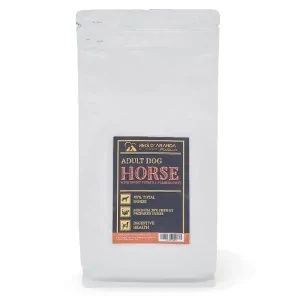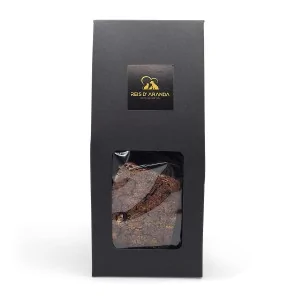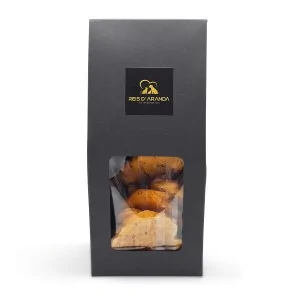Its name says it all: the Vienna blue rabbit comes from Austria. Not only is it beautiful with its shiny blue-grey...
THE BELGIAN MALINOIS SHEPHERD DOG
INTRODUCTION
The Belgian Malinois is one of the four varieties of the Belgian Shepherd breed of dog. It is named after the Belgian town of Mechelen (in Dutch Mechelen, in French Malines), where it originated. Although they are still used for herding, their main functions are: police dog, military dog, defence and security dog, guard dog, among other functions, depending on the use given to them by the security forces and the army.
THE ORIGIN OF THE BELGIAN MALINOIS
The first standard for this variety was drawn up by Professor Reul of the Club du Chien de Berger Belge and approved in 1892. The appearance, aptitudes and most of the physical characteristics written in this standard are almost identical to those of today. Their origins are the same as those of the wirehaired dogs.
Famous and widely used in the field in Belgium and France, the first Belgian Malinois Shepherds in America arrived in the United States in 1907, to be used by the police, thanks to their temperamental characteristics.
Their development is closely linked to sport, in particular the French Ring, and with its diffusion worldwide. In fact, in 1900 the first trials were organised with show jumping, obedience and a bite programme and by 1909 in Paris, the first World Ring Championship was held, from which it is held every year.
WHAT IS THE BELGIAN MALINOIS SHEPHERD DOG LIKE?
GENERAL APPEARANCE : It is a medium sized dog, of harmonious proportions, combining elegance and power, of medium size, with dry, strong muscles, set in a square; rustic, accustomed to the weather and built to withstand the atmospheric variations so frequent in the Belgian climate. By the harmony of its forms and the haughty bearing of its head, the Belgian Shepherd must give the impression of that elegant robustness which has become an attribute of selected representatives of a working breed. Belgian Shepherds will be judged in their natural positions, without physical contact with the presenter.
IMPORTANT PROPORTIONS: The Belgian Shepherd is set in a square. The chest comes down to the level of the elbows. The length of the muzzle is equal to or slightly more than half the length of the head.
HEAD: Tall, long, without exaggeration, straight, well chiselled and dry. The length of skull and muzzle are at most similar, with a slight advantage for the muzzle, which gives the whole an impression of fine workmanship.
CRANIAL REGION
SKULL : Of medium width, in proportion to the length of the head; forehead more flat than arched and sagittal furrow not very accentuated. In profile, the upper lines of the skull and muzzle are parallel. Occipital crest not very pronounced, superciliary and zygomatic arches not very prominent.
STOP: Moderate.
FACIAL REGION
TRUFA: Black.
HOCIO: Of medium length and well chiselled below the eyes, tapering gradually towards the nose, elongated wedge-shaped; nasal bridge straight and parallel to the extended upper line of the forehead. Mouth wide open means: corners of lips set well back; jaws set wide apart.
LIPS: Thin, well closed and strongly pigmented.
JAWS / TEETH: Teeth strong and white, regular and strongly set in well developed jaws. scissor bite tolerated and preferred by shepherds and shepherdesses. Complete dentition, corresponding to the dental formula; the absence of 2 premolars (2PM1) is tolerated and 3 molars (M3) should be disregarded.
EYES: Medium size, neither prominent nor deep set; slightly almond-shaped; oblique; brown, preferably dark; rims of eyelids black; direct, lively, intelligent and questioning gaze.
EARS: Rather small, set on high, distinctly triangular in appearance, well rounded shells, pointed ends; stiff, carried straight and upright when the dog is attentive.
NECK: Well developed, slightly elongated, well muscled, gradually broadening to the shoulders and without dewlap. The back of the neck is slightly arched.
FOREQUARTERS
topline : The topline of the back and loin is straight.
CROSS: Accentuated.
BACK: Firm, short and well muscled.
LOIN: Well muscled; sloping very slightly; broad enough, but not too broad.
CHEST: Slightly broad, but well let down. The ribs are arched at the top. Seen from the front, the forechest is not too broad, without being narrow.
BOTTOM LINE : Begins under the chest and rises slightly in a harmonious curve towards the belly, which is neither tucked up nor tucked up, but slightly raised and moderately developed.
TAIL: Well set on, strong at the base, of medium length, preferably reaching or passing the hock. At rest, carried pendulous, with the tip slightly bent backwards at the level of the hock. In action, higher, without exceeding the horizontal. The curve towards the point is more accentuated, without at any time forming a hook or a deflection.
LIMBS
FOREQUARTERS: Solid bone, but not heavy. Muscles dry and strong. Forequarters straight from all sides and perfectly parallel from the front.
Shoulders : Shoulder blades long and oblique, shoulders well laid back, forming a sufficient and ideal angle of 110° to 115° to the humerus.
ELBOWS: Firm, neither loose nor tight.
HANDS: Feet round, cat feet, with arched and well closed toes. Pads thick and elastic. Nails dark and thick.
HINDQUARTERS : Powerful, but not heavy; in profile, the hindquarters are well upright and, seen from behind, perfectly parallel.
KNEES: Approximately straight at the croup; normal angulation of the stifle.
METATARS: Solid and short. No ergos desired.
FEET: May be slightly oval. Toes arched and well closed. Pads thick and elastic. Nails dark and thick.
GAIT / MOVEMENT : Live and free in all its forms. The Belgian Shepherd is a good galloper, but his usual movement is the walk and especially the trot, the limbs moving parallel to the median plane of the body. At high speed, the feet are close to the median plane (single tracking). At trot, the amplitude is medium, the movement is regular and easy, with good propulsion of the hindquarters. The topline remains very tight, without the front legs rising too high (Hackney). In constant movement, the Belgian Shepherd seems tireless. His gait is quick, springy and lively. It is capable of making a sudden change of direction at full speed. Due to his exuberant temperament and his desire to guard and protect, he has a tendency to move in circles.
SKIN: Elastic, but well spread over the body; well pigmented lips and eyelids.
COAT :
HAIR: The coat is very short on the head, the outer side of the ears and the lower part of the limbs. It is short on the rest of the body and more abundant on the tail and around the neck, where it forms a ruff which starts at the base of the ear and extends to the throat. In addition, the back of the thighs is covered with longer hairs forming fringes. The tail is herringbone, but does not form a tuft.
COLOUR:
MASK: In the Tervuerens and Malinois, the mask should be well pronounced and tend to cover in a single black area, both the upper and lower lip, as well as the corner of the lips and the eyelids. A strict minimum of six points of pigmentation has been defined: the two ears, the two upper eyelids and the upper and lower lip.
CHARCOALING: In both Tervuerens and Malinois, charcoaling means that some hairs have a black tip, which darkens the base colour. This black colour must in any case be ‘flaming’ and must not appear in large patches or in the form of stripes.
SIZE:
Males: 62 cm
Bitches : 58 cm
FAULTS: Any departure from the terms of this standard should be considered a fault and should be punished in exact proportion to its seriousness and its effect on the health and welfare of the dog.
- GENERAL APPEARANCE: Too heavy, not too elegant, too light or too weak, longer than high, set in a rectangle.
- HEAD: Heavy, too strong, not parallel, not chiselled or dry; forehead too rounded; stop too marked or unmarked; muzzle too short or pointed; nasal bridge concave; superciliary or zygomatic arches too prominent.
- NOSE, NOSE, LIPES AND NECK: Signs of depigmentation.
- TEETH: Incisors poorly set.
- HAIR : Semi-long hair where it should be short; sparse hair; harsh hair mixed with short hair; wavy hair.
SERIOUS FAULTS:
- Missing 1 incisor, 1 PM3, 3 PM1, 1PM2 or 3PM1.
- EYES : Clear, round.
- EARS: Large, long, very wide at the base, low set, divergent or convergent.
- NECK: Weak; short or tucked up between the shoulders.
- BODY: Very elongated; sides of chest too broad (cylindrical).
- CROSS: Dull or low.
- TOPLINE: Back and/or loin long, weak, saddled or ruffled.
- Croup: Very sloping or high.
- BOTTOM LINE: Too much or too little let down; too much belly.
- TAIL: Set on too low; carried too high; hooked; deviated.
- LIMBS: Bone too light or too heavy; seen in profile, poorly fitting (e.g. too oblique forelegs or weak carpus). Seen from the front, legs turned outwards or inwards, dislocated elbows, etc. Or, seen from behind, hindquarters too close together, too wide apart or barrel-shaped, open or closed hocks, etc.; too little or exaggerated angulation.
- FEET: Open.
- GAIT / MOVEMENT: Close, very short stride, poor propulsion, poor transmission through the back, rental car.
- HAIR: Insufficient undercoat, woolly, wavy or curly hair. Hair not long enough. Red highlights in coat, grey breeches.
DISQUALIFYING FAULTS
- Aggressiveness or excessive shyness.
- Any dog showing any sign of physical or behavioural abnormality shall be disqualified.
- TEETH: Overshot or undershot, even without loss of contact (reverse scissors); cross occlusion; absence of 1 canine (1C), 1 upper (1 PM4) or lower (1M1) premolar, 1 molar (1M1 or 1M2, disregard M3), 1 premolar 3 (1PM3) plus any other tooth, or a total of 3 teeth (excluding premolars) or more.
- NOSE, NOSE, LIPS AND ARRORS: Strongly depigmented.
- EARS: Drooping or held artificially erect.
- TAIL: Absence of tail (from birth or by amputation); carried very high and ring-shaped or curly.
- HAIR: Absence of undercoat.
- COLOURS: All colours not corresponding to the colours of the varieties described. Large chest patches, especially if they run to the withers. White on the feet, exceeding half of the metacarpals or metatarsals, forming stockings.
- SIZE: Outside the permitted limits.
NB:
- Male dogs should have both testicles, of normal appearance, well let down and tucked up in the scrotum.
- Only clinically and functionally sound dogs with typical breed conformation should be used for breeding.
BELGIAN SHEPHERD MALINOIS: KING OF THE SPORTING DOGS
They are real workaholics in the canine world and, although not particularly popular with the general public, are highly prized by the Police and Military for their dedication and devotion to explosives and drug detection and rescue work; they are also highly valued by sports enthusiasts for their great competitive ability.
They have overtaken the famous German Shepherd (the superdog par excellence for decades) in police, rescue, attack/defence and advanced training.
NEGLECT IN BELGIAN MALINOIS SHEPHERDS
The Belgian Shepherd Malinois is not a dog suitable for all families, especially if they are not people with extensive knowledge of training, sportsmen or whose work is focused on dog work (police, training, canine sporting events...).
The Malinois became very popular a few years ago and its physical capabilities surprised the world, making everyone want to have one, even without any knowledge about dogs and with the idea in the head that ‘dogs are as you educate them’ and that the Malinois could live quietly in a house or flat and go out three times a day.
As we have seen, the Malinois is a workaholic and requires a lot of mental and physical energy to be healthy, otherwise his behaviour can become destructive and aggressive, releasing this excess energy on family members, other animals or furniture in the house.
This caused a wave of Malinois abandoned in shelters or kennels.
CONCLUSION
If you choose to have a Malinois, recognised as a ‘Mali’, you must cover its needs very well, as it is a potentially intelligent dog that requires constant learning, training and an active mind. In addition, it is a very sporty dog, which needs walks in nature to cover its stimuli and instincts.
Finally, it is a very protective and vigilant breed, and if we do not work on this well, it can become too much of an incentive and can become a problem, which is why education and socialisation from puppyhood is essential.
Leave a comment
Log in to post comments
















